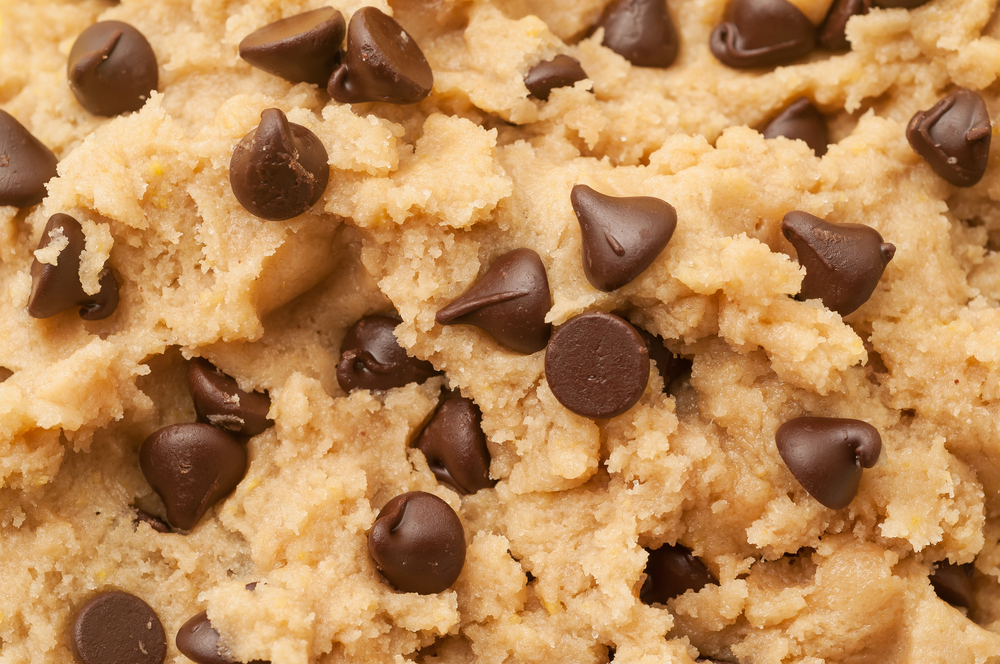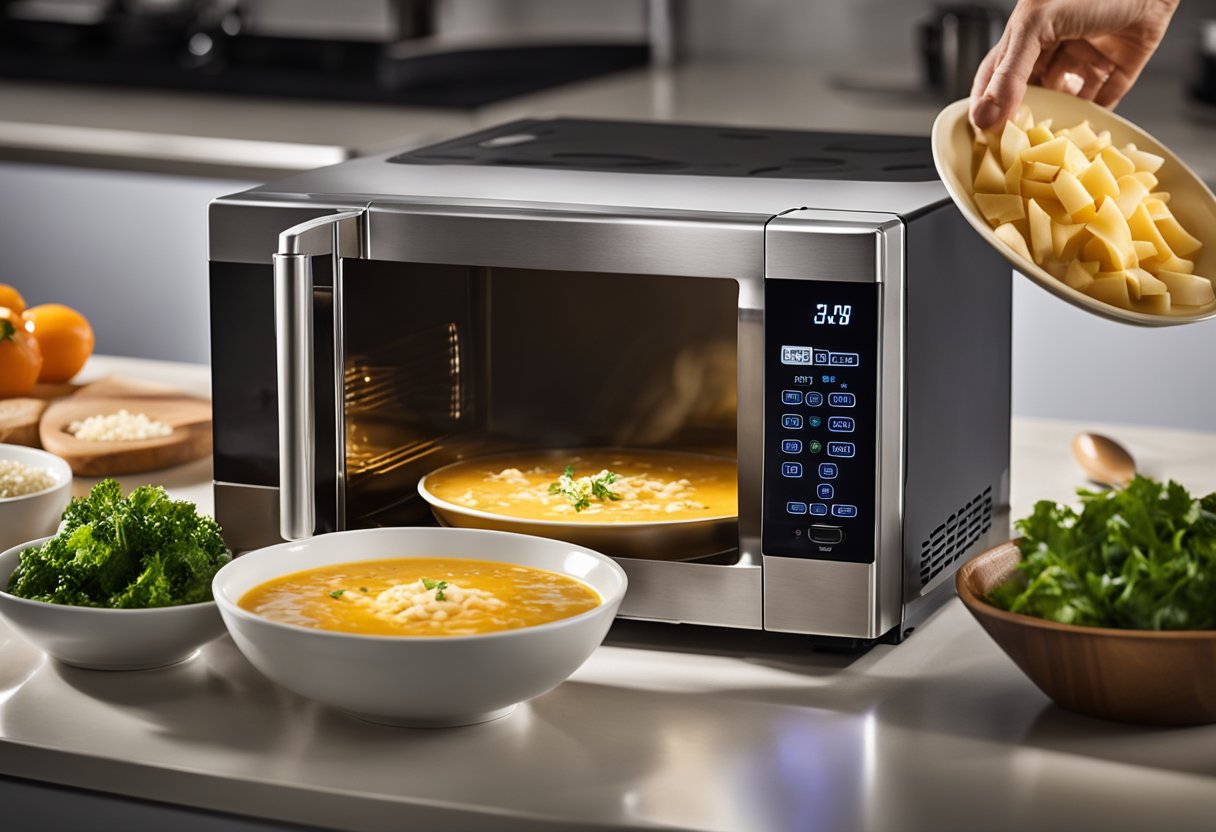Thawing frozen cookie dough is an essential step in the cookie-making process. Whether you’re preparing a batch of cookies for a special occasion or just want to enjoy a sweet treat, it’s important to know how to properly thaw frozen cookie dough.
In this article, I will share with you some tips and tricks on how to safely and effectively thaw frozen cookie dough.

Understanding the different types of frozen cookie dough and how to properly store them is crucial to ensure that your cookies turn out perfectly every time.
From drop cookie dough to slice-and-bake, each type requires a different approach when it comes to thawing.
Additionally, freezing and thawing can affect the texture and taste of the cookies, so it’s important to take these factors into consideration when thawing your dough.
Key Takeaways
- Proper storage is crucial for maintaining the quality of frozen cookie dough.
- Thawing methods vary depending on the type of cookie dough.
- Microwaving frozen cookie dough is a quick and convenient option, but it may affect the texture of the dough.
Understanding Frozen Cookie Dough
As a baker, I always make sure to have some homemade cookie dough ready in my freezer for whenever I have a craving or need to bake some cookies quickly.
Freezing cookie dough is a great way to have fresh cookies anytime without having to make the dough from scratch every time. However, it is essential to understand how to freeze and thaw cookie dough correctly to avoid any issues.
When freezing cookie dough, it is crucial to wrap it tightly to prevent freezer burn. Freezer burn occurs when moisture evaporates from the dough, leaving it dry and crumbly. Wrapping the dough in plastic wrap or aluminum foil can help prevent freezer burn.
Additionally, you can place the wrapped dough in a freezer-safe container or bag to further protect it from freezer burn and to make it easier to store.
When it comes to thawing frozen cookie dough, there are a few methods you can use. The most recommended method is to thaw the dough in the refrigerator overnight.
This method allows the dough to thaw slowly and evenly, which helps maintain its texture and flavor. Place the frozen dough in the refrigerator and let it thaw overnight. Once thawed, the dough will be ready to bake.
If you need to thaw the dough quickly, you can use the room temperature method. To do this, remove the frozen dough from the freezer and let it sit at room temperature for about 30 minutes to an hour.
However, this method can cause the dough to thaw unevenly, which can affect the texture and flavor.
Another way to thaw frozen cookie dough is to use the microwave. To do this, remove the dough from the freezer and place it on a microwave-safe plate.
Microwave the dough on low power for 30-second intervals, checking and flipping the dough after each interval until it is thawed. However, be careful not to overheat the dough, as this can cause it to melt and become unusable.
In conclusion, understanding how to freeze and thaw cookie dough correctly is essential to maintaining its texture and flavor.
By wrapping the dough tightly and using the recommended thawing methods, you can have fresh cookies anytime without having to make the dough from scratch every time.
Types of Frozen Cookie Dough

When it comes to freezing cookie dough, not all types of dough freeze equally. Some cookies freeze better than others, and some require a bit of extra care to ensure that they thaw properly. Here are some of the most common types of frozen cookie dough:
Chocolate Chip Cookies
Chocolate chip cookies are one of the most popular types of cookies, and they freeze quite well. You can freeze the dough either in pre-formed balls or as a log.
If you freeze the dough in balls, you can thaw them out and bake them as usual. If you freeze the dough as a log, you’ll need to slice it into rounds before baking.
Sugar Cookies
Sugar cookies are another popular type of cookie that freeze well. You can freeze the dough in pre-formed shapes or as a log. If you freeze the dough as a log, you’ll need to slice it into rounds before baking.
Drop Cookies
Drop cookies are cookies that are dropped onto the baking sheet using a spoon or cookie scoop. These cookies freeze well, but you’ll need to freeze them in pre-formed balls. Once they’re frozen, you can thaw them out and bake them as usual.
Meringues
Meringues are a type of cookie made from egg whites and sugar. They’re light and airy, and they freeze very well. You can freeze meringue cookies in an airtight container or freezer bag for up to three months.
Snickerdoodle Cookies
Snickerdoodle cookies are a type of sugar cookie that are rolled in cinnamon sugar before baking. These cookies freeze well, but you’ll need to freeze them in pre-formed balls. Once they’re frozen, you can thaw them out and bake them as usual.
Regardless of the type of cookie dough you’re freezing, it’s important to label the container or bag with the type of cookie and the date it was frozen. This will help you keep track of what’s in your freezer and ensure that you use the oldest dough first.
Proper Storage of Frozen Cookie Dough
As someone who loves to bake, I know the importance of proper storage when it comes to frozen cookie dough. Improper storage can lead to freezer burn, which can affect the texture and taste of your cookies.
Here are some tips on how to properly store your frozen cookie dough:
- Plastic wrap is your friend. When freezing cookie dough, wrap it tightly in plastic wrap to prevent air from getting in and causing freezer burn. Make sure to press the wrap against the dough to remove any air pockets.
- Use a container. If you don’t want to use plastic wrap, you can also store your cookie dough in a container. Make sure the container is airtight to prevent freezer burn. You can even use a container with dividers to separate different types of cookie dough.
- Label your dough. It’s important to label your cookie dough with the date and type of dough. This will help you keep track of what you have in your freezer and how long it has been stored. You can use a permanent marker or a label maker to label your dough.
- Use freezer bags. Freezer bags are a great option for storing cookie dough. They are airtight and can be easily labeled. Make sure to remove any excess air before sealing the bag.
- Use airtight containers. If you’re using a container to store your cookie dough, make sure it is airtight. This will prevent any air from getting in and causing freezer burn.
- Odor absorption. If you’re storing cookie dough in the same freezer as other foods, you may want to consider using odor-absorbing products like baking soda or charcoal to prevent the cookie dough from absorbing any unwanted odors.
By following these tips, you can ensure that your frozen cookie dough stays fresh and delicious. Proper storage is key to maintaining the quality of your baked goods, so don’t overlook this important step in the baking process.
Thawing Frozen Cookie Dough
Thawing frozen cookie dough is an essential step to ensure that your cookies turn out delicious and perfectly baked. There are several ways to thaw cookie dough, but not all methods are equal. Here are some of the best ways to thaw frozen cookie dough:
Thawing in the Fridge
One of the most recommended ways to thaw frozen cookie dough is to place it in the fridge and leave it overnight. This method is the safest because it prevents the growth of harmful bacteria while thawing the dough slowly.
To thaw cookie dough in the refrigerator, remove your frozen dough from the freezer and place it inside. It will take approximately 24 hours for the dough to thaw completely.
Thawing at Room Temperature
Thawing cookie dough at room temperature is not recommended as it can lead to the growth of harmful bacteria.
However, if you’re in a hurry and need to thaw the dough quickly, you can leave it at room temperature for a few hours. It is essential to monitor the dough’s temperature and ensure that it does not reach 40°F.
Thawing in the Microwave
Thawing frozen cookie dough in the microwave is another option, but it can be tricky. The microwave can cause the dough to cook unevenly or partially cook some parts of the dough.
To thaw cookie dough in the microwave, place the frozen dough on a microwave-safe plate and microwave it for 10-15 seconds at a time.
Keep checking the dough’s temperature and turn it over after each interval. Repeat until the dough is thawed completely.
Thawing in Cold Water
Thawing frozen cookie dough in cold water is another option if you’re in a hurry. To thaw cookie dough in cold water, place the frozen dough in a sealed plastic bag and submerge it in cold water.
Change the water every 30 minutes until the dough is thawed completely.
Thawing Before Baking
It is essential to thaw cookie dough before baking it. Baking frozen cookie dough can cause the cookies to cook unevenly or not cook at all. Thawing the dough ensures that the cookies bake evenly and are fully cooked.
In conclusion, there are several ways to thaw frozen cookie dough, but the best way is to thaw it in the fridge overnight. Thawing cookie dough at room temperature or in the microwave can lead to the growth of harmful bacteria or unevenly cooked cookies.
Thawing the dough before baking is essential to ensure that the cookies bake evenly and are fully cooked.
Baking Thawed Cookie Dough
When it comes to baking thawed cookie dough, there are a few things to keep in mind to ensure that your cookies turn out perfectly every time. Here are some tips to follow:
Preheat the Oven
Before you start baking, preheat your oven to the temperature specified in the recipe. This will ensure that your cookies bake evenly and have a crispy exterior with a soft, chewy interior.
Line Your Baking Sheet
To prevent your cookies from sticking to the baking sheet, line it with parchment paper. This will also make cleanup easier and ensure that your cookies have a uniform shape.
Place the Cookies on the Sheet
Place the thawed cookie dough onto the parchment-lined baking sheet, leaving about 2 inches of space between each cookie. This will allow them to spread out as they bake.
Bake the Cookies
Bake the cookies in the preheated oven for the amount of time specified in the recipe. Keep an eye on them towards the end of the baking time to ensure that they don’t overcook.
Cool the Cookies
Once the cookies are done baking, remove them from the oven and let them cool on the baking sheet for a few minutes before transferring them to a wire rack to cool completely. This will prevent them from breaking apart when you remove them from the baking sheet.
By following these simple steps, you can bake thawed cookie dough with confidence and enjoy delicious, homemade cookies in no time!
Portioning and Freezing Cookie Dough
When it comes to freezing cookie dough, portioning is key. This ensures that you have the right amount of dough ready for baking and prevents waste. Here are some tips for portioning and freezing cookie dough:
Use an Ice Cream Scoop
Using an ice cream scoop is an easy way to portion cookie dough. It ensures that each cookie is the same size, which is important for even baking. Simply scoop the dough onto a baking sheet lined with parchment paper, and freeze until solid.
Shape into Logs or Disks
If you’re making slice-and-bake cookies, shape the dough into logs or disks before freezing. Wrap the logs or disks tightly in plastic wrap and then in aluminum foil. Label and date the package, and freeze until ready to bake.
Divide into Portions
If you’re freezing cookie dough to make individual cookies, divide the dough into portions before freezing. You can use a cookie scoop or a spoon to portion the dough.
Place the portions onto a baking sheet lined with parchment paper, and freeze until solid. Once frozen, transfer the portions to a freezer-safe container or bag, label, and date.
Freeze Cookies First
If you’ve already baked the cookies and want to freeze them, place them in a single layer on a baking sheet and freeze until solid. Once frozen, transfer the cookies to a freezer-safe container or bag, label, and date.
Use Icebox Cookie Dough
Icebox cookie dough is a type of cookie dough that is meant to be chilled before baking. To freeze icebox cookie dough, shape the dough into a log or disk, wrap it tightly in plastic wrap and then in aluminum foil. Label and date the package, and freeze until ready to bake.
By following these simple tips, you can easily freeze cookie dough and have fresh-baked cookies whenever you want.
Effects of Freezing and Thawing on Cookie Dough

Freezing cookie dough is a convenient way to have fresh cookies anytime you want without the hassle of making dough from scratch every time. However, freezing and thawing can have some effects on the texture, spread, and taste of the cookies.
When cookie dough is frozen, ice crystals form inside the dough, which can affect the texture of the cookies. The ice crystals can cause the dough to become dry and crumbly, resulting in cookies that are hard and brittle.
To minimize this effect, it is recommended to wrap the dough tightly in plastic wrap or put it in an airtight container before freezing.
Defrosting cookie dough is also important to consider. If the dough is not defrosted properly, it can result in uneven baking and an undesirable texture.
There are several ways to defrost cookie dough, such as in the refrigerator, at room temperature, or in the microwave. It is important to follow the recommended defrosting method for the type of cookie dough you have.
The texture and taste of the cookies can also be affected by freezing and thawing. Some types of cookies, such as those made with whipped egg whites, can lose their light and fluffy texture when frozen.
Additionally, the fat in the dough can become rancid over time, resulting in cookies that taste off. To minimize these effects, it is recommended to use fresh ingredients and to not freeze the dough for too long.
Another factor to consider is bacteria growth. While freezing can slow down the growth of bacteria, it does not completely stop it.
Therefore, it is important to handle the dough properly before freezing and to not keep it frozen for too long. It is recommended to freeze cookie dough for no longer than three months.
In summary, freezing and thawing can have some effects on the texture, spread, and taste of cookie dough. To minimize these effects, it is important to handle the dough properly before freezing, to wrap it tightly, to defrost it properly, and to not freeze it for too long.
Microwaving Frozen Cookie Dough
Microwaving frozen cookie dough is a quick and easy way to defrost it. However, it is important to note that microwaving can cause the dough to become soft and sticky, which can make it difficult to work with.
Here are some tips to help you microwave frozen cookie dough:
- Remove the frozen cookie dough from the freezer and place it in a microwave-safe dish.
- Cover the dish with plastic wrap to prevent moisture from escaping.
- Microwave the dough on the defrost setting for 25 seconds.
- Flip the dough over and microwave for an additional 25 seconds.
- Check the dough to see if it has thawed completely. If not, microwave for an additional 10-15 seconds.
It is important to note that microwaving times may vary depending on the power of your microwave and the size of the dough. It is best to check the dough frequently to ensure that it does not overheat.
If you plan on microwaving frozen cookie dough, it is recommended that you only defrost small amounts at a time. This will help ensure that the dough thaws evenly and does not become too soft.
Overall, microwaving frozen cookie dough can be a quick and easy way to defrost it. However, it is important to be careful and check the dough frequently to ensure that it does not overheat or become too soft.
Freezing and Thawing Baked Cookies

When it comes to freezing baked cookies, there are a few things to keep in mind to ensure that the cookies maintain their texture and flavor. Here are some tips for freezing and thawing baked cookies:
Best Cookies to Freeze
Not all cookies freeze well, so it’s important to choose the right ones if you want to freeze them. Cookies that freeze well include:
- Chocolate chip cookies
- Sugar cookies
- Oatmeal cookies
- Peanut butter cookies
Cookies that don’t freeze well include those with a high moisture content, such as meringues or macarons.
Freezing Baked Cookies
To freeze baked cookies, make sure they are completely cool before placing them in an airtight container or freezer bag. You can also wrap them individually in plastic wrap or aluminum foil before placing them in the container or bag.
It’s important to label the container or bag with the type of cookie and the date it was frozen. Baked cookies can be frozen for up to three months.
Thawing Baked Cookies
To thaw baked cookies, remove them from the freezer and let them come to room temperature in their container or bag. This will take about 1-2 hours.
If you’re in a hurry, you can also microwave the cookies on a low heat setting for about 10-15 seconds, or until they are soft and warm.
Bake Frozen Cookies
If you want to bake frozen cookie dough, you can do so without thawing it first. Simply place the frozen dough on a baking sheet and bake it according to the recipe, adding an extra 1-2 minutes of baking time.
By following these tips, you can freeze and thaw baked cookies without sacrificing their texture or flavor.
Safety Concerns with Frozen Cookie Dough

As much as we all love the convenience of being able to freeze cookie dough for later use, there are some safety concerns that we need to be aware of when it comes to handling and thawing frozen cookie dough.
One of the biggest concerns is the risk of bacterial growth. When cookie dough is frozen, any bacteria that may have been present in the dough is put on hold. However, when the dough is thawed, the bacteria can start to grow again if the dough is not handled properly.
To minimize the risk of bacterial growth, it is important to thaw frozen cookie dough safely. This means avoiding methods that can cause the dough to thaw too quickly or at an unsafe temperature.
Thawing cookie dough at room temperature is not recommended, as this can allow the dough to reach temperatures that are ideal for bacteria growth.
Instead, it is best to thaw frozen cookie dough in the refrigerator, where the temperature is consistently cold enough to keep bacteria at bay.
Another important safety consideration is to make sure that the cookie dough has not passed its expiration date before freezing it. If the dough has already started to spoil, freezing it will not make it safe to eat.
It is also important to handle frozen cookie dough with clean hands and utensils to avoid introducing any additional bacteria into the dough. And once the dough has been thawed, it should be used promptly to minimize the risk of bacterial growth.
By following these safety guidelines, you can enjoy the convenience of frozen cookie dough while minimizing the risk of foodborne illness.
Understanding the Role of Ingredients in Frozen Cookie Dough

As a baker, I know that the ingredients used in a recipe play a vital role in the final product. This is especially true when it comes to frozen cookie dough. Here are some of the key ingredients and their role in the dough:
Butter
Butter is a crucial ingredient in cookie dough, and it plays a significant role in the texture and flavor of the final product. When frozen, butter becomes hard, making it difficult to work with. It is important to let the dough thaw before trying to shape or bake it.
Sugar
Sugar is another essential ingredient in cookie dough. It not only adds sweetness but also helps to create a crisp exterior while keeping the interior soft and chewy.
When frozen, sugar can become dense and clumpy, making it difficult to mix into the dough. It is essential to let the dough thaw before trying to mix in any additional sugar.
Chocolate Chips
Chocolate chips are a popular addition to cookie dough, and they can be added before or after freezing. However, it is important to note that chocolate chips can become hard and brittle when frozen, making them difficult to work with.
If you plan on adding chocolate chips to your frozen dough, it is best to let the dough thaw before adding them.
Fat
Fat is an essential ingredient in cookie dough, and it helps to create a tender and moist texture. When frozen, the fat in the dough can become hard, making it difficult to work with. It is important to let the dough thaw before trying to shape or bake it.
In conclusion, understanding the role of ingredients in frozen cookie dough is crucial for achieving the perfect texture and flavor in the final product.
By letting the dough thaw before working with it, you can ensure that the ingredients are properly mixed and the dough is easy to work with.
Frequently Asked Questions
What is the best way to defrost frozen cookie dough?
The best way to defrost frozen cookie dough is to transfer it from the freezer to the refrigerator and leave it to thaw overnight.
This will ensure that the cookie dough thaws evenly and prevents the growth of harmful bacteria. Alternatively, you can also thaw the cookie dough at room temperature for a few hours, but this method is not recommended as it increases the risk of bacterial growth.
Can you bake frozen cookie dough without thawing it?
Yes, you can bake frozen cookie dough without thawing it. However, you may need to adjust the baking time and temperature accordingly.
It may take longer to bake frozen cookie dough, and the cookies may not spread as much as fresh dough. It is also important to note that baking frozen cookie dough may result in unevenly baked cookies.
How long does it take to thaw frozen cookie dough?
The time it takes to thaw frozen cookie dough depends on several factors, such as the size of the dough and the temperature of the surrounding environment. Generally, it takes about 8-12 hours to thaw frozen cookie dough in the refrigerator.
Thawing at room temperature may take a few hours, while thawing in the microwave can take just a few minutes.
What temperature should you bake frozen cookie dough at?
You should bake frozen cookie dough at the same temperature as fresh dough. Preheat your oven to the temperature specified in your recipe and bake the cookies for the same amount of time.
However, you may need to add a few extra minutes to the baking time to ensure that the cookies are fully cooked.
How long can you keep frozen cookie dough?
Frozen cookie dough can be stored in the freezer for up to three months. After that, the quality of the dough may begin to deteriorate, and it may not bake as well. It is important to label the containers with the date and type of dough to ensure that you use the oldest dough first.
Is it better to freeze or refrigerate cookie dough?
It depends on how long you plan to store the dough. If you plan to use the dough within a few days, refrigerating it is the best option.
However, if you want to store the dough for longer, freezing it is a better option. Frozen dough can be stored for up to three months, while refrigerated dough should be used within a few days.







